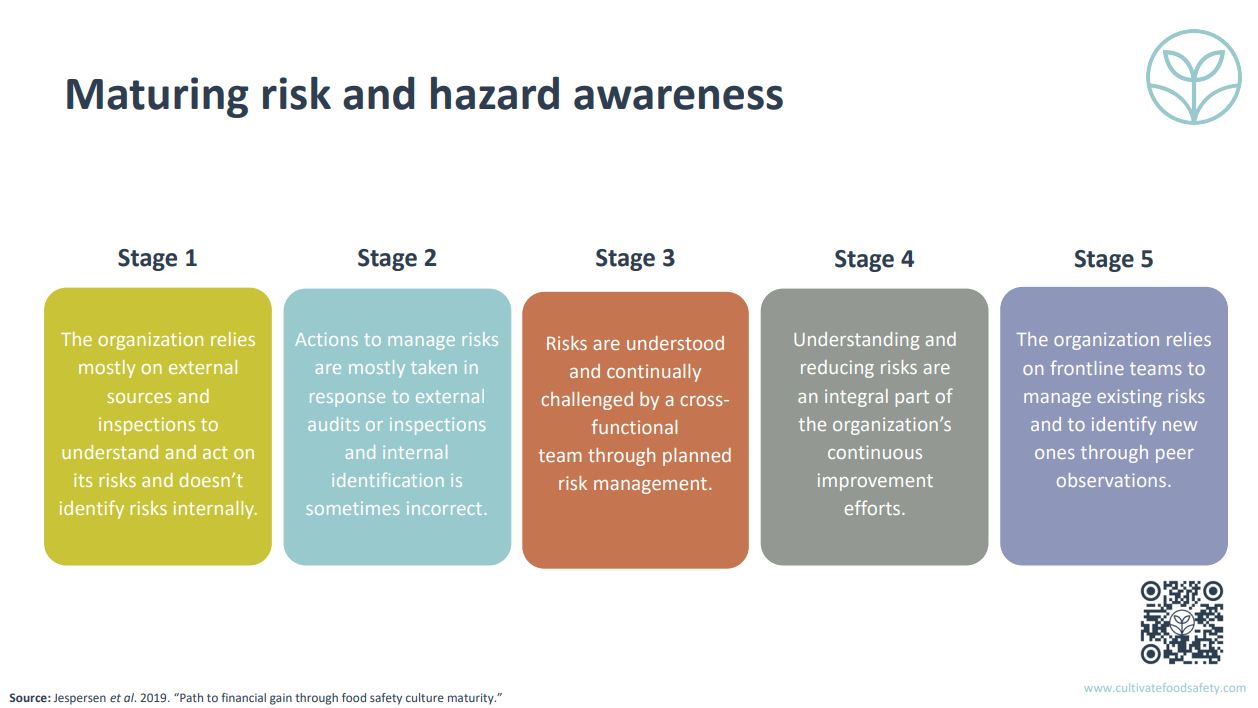During our webinar titled “Food Safety Culture and Color-Coding: How to exceed compliance and simplify complexities,†industry leaders shared insights on how color-coding can help create consistent food safety behaviors and foster a culture of quality and safety.
Amit M. Kheradia, our environmental health and sanitation manager, and Lone Jespersen, founder of Cultivate SA, answered questions during and after the session. Here are six key takeaways from their discussion.
1. Is there a science-based tool or literature to evaluate food safety culture in an organization? What are some measurable KPIs?
The GFSI Technical Working Group defines food safety culture as "shared values, beliefs, and norms that affect mindset and behavior toward food safety." While it's not as straightforward to measure as technical standards, performance indicators can still provide insight. Common KPIs include:
- Employee hygiene practices
- Sanitation protocols
- Storage and handling procedures
- Cross-contamination prevention
- Recordkeeping and monitoring
Organizations should form a guiding team and ensure leadership commitment. Tools like the Cultivate Maturity Model, BRCGS, SQF, FSSC 22000, and PAS 320:2023 offer guidance.

Color-coding is not a magic solution, but it simplifies complex processes by making them more visual and easier to follow. For example, using color-coded tools helps prevent cross-contamination and ensures better hygiene. It also supports behavioral change by reinforcing good practices through visual cues.
According to Cultivate SA’s maturity model, color-coding becomes most effective when employees understand and internalize the importance of these systems. This requires training, clear communication, and ongoing engagement.
Some practical examples include:
- Color-coded uniforms for high-risk areas
- Color-coded containers for waste vs. useable items
- Color-coded equipment for different zones
- Color-coded labels for allergens
- Color-coded maps for hygienic zones
Implementing color-coding successfully needs employee buy-in and regular training to ensure consistency and effectiveness.
2. Are there global standards for color-coding in the food industry?
Vikan pioneered color-coding in the 1990s, and while it's now widely used, there isn’t a universal standard. Each site must tailor its plan based on its specific needs and processes. However, resources like Vikan’s Guide to Color-Coding offer best practices and recommendations.
3. Why is a color-coding plan alone not enough to improve food safety culture?
Color-coding is just one part of a larger system. It needs to be supported by strong leadership, risk analysis, and a culture that prioritizes food safety over other goals. Without this, even the best plans may fail.
4. How can we recognize and reward employees to sustain a strong food safety culture?
Recognition should be personalized and meaningful. Understanding what motivates each employee is key. Team recognition is also important, as food safety is a collaborative effort.
5. What tips do you have for developing a robust color-coding plan?
Keep it simple, consistent, and well-communicated. Training and support are essential for success. Resources such as Color-Coding white papers and Checklists can guide implementation.
Disclaimer: The opinions expressed here are those of the experts and do not necessarily reflect the views of any company or product.
Contact information for further assistance:
- Lone Jespersen –
- Amit M. Kheradia –
Recent blog posts
Digital solutions for a sustainable future
Digital tools like Virtual Site Surveys helped reduce travel during the pandemic and could also lower environmental impact. Discover how technology is shaping a greener future.
Essentials of Drain Sanitation for Food Production Facilities
Drains can become breeding grounds for pathogens. Learn how to manage them effectively to maintain high hygiene standards.
Key Proceedings of IAFP 2023 – Hot Topics in Global Food Safety
Explore the latest trends and innovations in food safety from the IAFP 2023 conference.
Cheese Tools,Cheese Cutting Board,Cheese Slicer Board,Wire Cheese Slicer
Xiongyang Household Co., Ltd , https://www.yjkitchen-manage.com
